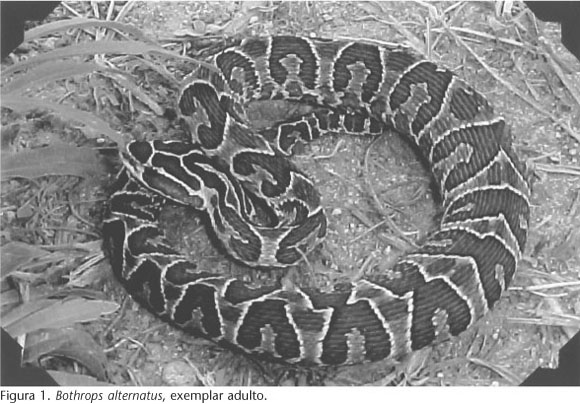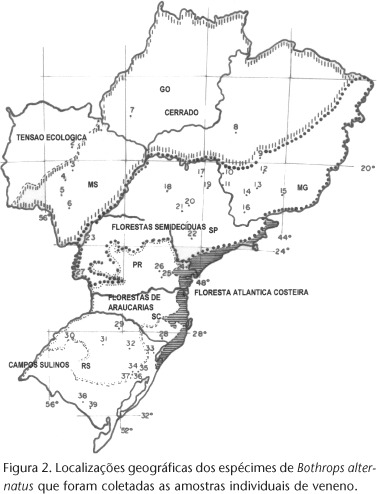Bothrops alternatus Duméril, Bibron & Duméril, 1854 snakebites are an important public health problem in Brazil. Such snakes are found from Mato Grosso do Sul (central Brazil) to southeastern Brazil, reaching even Argentina and Uruguay and thereby occupying different morphoclimatic domains. This work investigated venom variation occurring in adult specimens of B. alternatus specimens, according to their geographic distribution in Brazil. The standard venom pool (reference venom) produced by Instituto Butantan, which includes mostly venoms from B. alternatus specimens captured in São Paulo State, was also used for comparison. Lethal, myotoxic, proteolytic (on casein), and coagulant (on human plasma) activities, as well as the electrophoretic patterns of 61 individual venom samples, were evaluated and compared to those of the reference venom pool. Results showed that B. alternatus venom activities are less potent than those of other Bothrops Wagler, 1824 species. A great individual variation was noticed, which could not be correlated with either geographic distribution or morphoclimatic domains. Coagulant activity of venom samples obtained from specimens captured in the northeastern area of B. alternatus distribution was less intense if compared to those obtained from the central zone. Venoms from the peripheric area of B. alternatus distribution presented higher proteolytic and myotoxic activities, but no statistically significant difference was observed. In summary, individual variation predominated over geographic distribution.
Biogeography; intraspecific variation; venom activities







